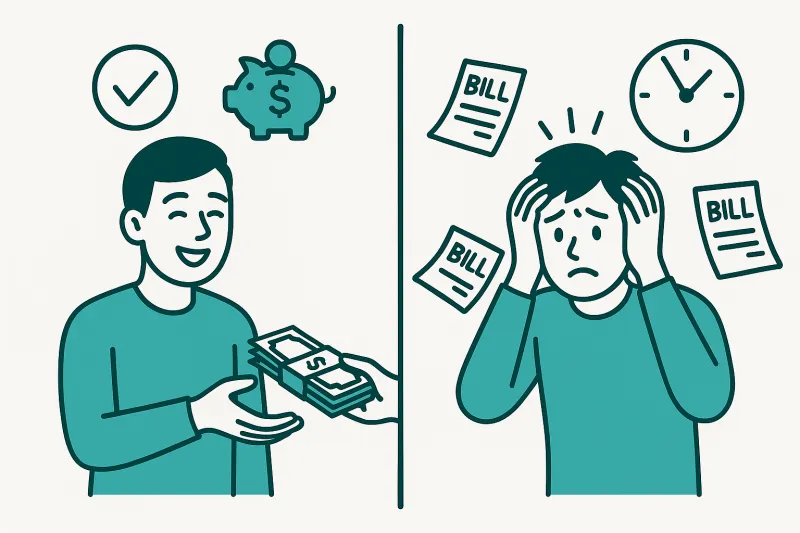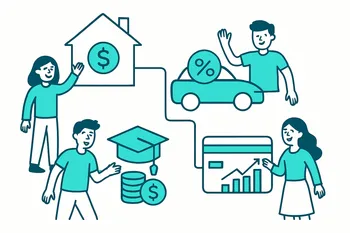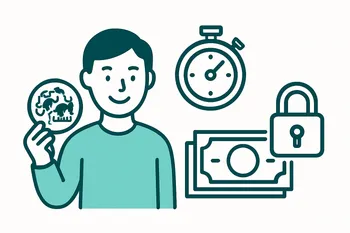Understanding Paycheck Loans: What You Need to Know
- Personal Finance
- 03 Mins read

Introduction to Paycheck Loans
In today's fast-paced world, paycheck loans offer quick financial relief. They are short-term loans often used to cover immediate cash needs until the next paycheck arrives. In Australia, paycheck loans are common but understanding their implications is critical to managing your personal finances effectively.
What Are Paycheck Loans?
Paycheck loans, also known as payday loans, provide short-term financial assistance. These loans offer small amounts, generally due to be paid back on your next payday. They can be a lifeline during emergencies but come with high-interest rates and fees.
How Do Paycheck Loans Work?
The process is straightforward. You borrow a small amount, usually under $2,000, and repay it by your next wage cycle. In my ten years as a finance professional, I’ve seen paycheck loans utilized effectively in emergencies, like sudden car repairs or medical bills. However, they carry risks if not managed wisely.
Key Benefits and Risks
Benefits:
- Quick Approval: Typically approved within 24 hours.
- Accessibility: Available even if credit history isn't perfect.
Risks:
- High Costs: Interest rates can exceed 20% annually.
- Potential for Debt Cycles: The high cost might lead to borrowing more.
Notice these risks before committing. According to the Australian Securities and Investments Commission (ASIC), repeated use can trap borrowers in debt.
Understanding the Costs
Understanding fees and interest rates is essential. A payday loan often includes an establishment fee (up to 20% of the loan amount) and a monthly fee (up to 4%).
Example: Borrowing $500 might cost an additional $120 in fees alone. A small emergency could spiral into a significant expense without careful planning.
Key Takeaway: Always read the fine print. Consider if a paycheck loan is the best option or if alternatives are available.
Regulatory Environment in Australia
In response to the risks, Australia regulates payday lending heavily. Under the National Credit Protection Act, lenders must adhere to strict guidelines.
Core Regulations:
- Loan Amount Limits: Only allow small-dollar loans.
- Fee Caps: Limit fees and interest rates to protect consumers.
Such regulations aim to protect you from unsustainable debt. Always ensure your lender is licensed by checking with ASIC.
Alternatives to Paycheck Loans
Sometimes, other options are better suited to your needs. Setting a budget or using a credit card can save on interest in the long run.
Credit Card vs. Paycheck Loan:
- Pros of Credit Cards: Lower interest if paid promptly, improving credit score.
- Cons: Requires discipline to avoid debt.
Personal Story: A client once thought a paycheck loan was the only solution. After discussing their needs, they opted for a credit line while negotiating repayment terms with their creditors. This decision saved them hundreds in fees.
Real-World Scenario
Imagine Sarah, who suddenly faces a hefty vet bill. Unsure of how to proceed, she considers a paycheck loan. By evaluating alternative scenarios, like setting up a payment plan with the vet, Sarah mitigates the risk of spiraling debt.
Steps to Take Before Borrowing
- Evaluate Your Need: Is a loan necessary, or are there other payment arrangements?
- Shop Around: Compare different lenders for rates and conditions.
- Calculate Affordability: Can you repay without financial stress?
- Check the Lender’s Reputation: Read reviews and verify credentials via ASIC.
Final Thought
Reflect on your financial habits. Nathan Smith, author and finance professional, advises, “Use paycheck loans sparily as they can lead to larger debt if not managed well.”
Is a Paycheck Loan Right for You?
For some, a paycheck loan offers the right solution. But always weigh potential pitfalls against the urgency of your financial need. Educating yourself today builds a secure tomorrow.
Conclusion
Navigating the world of paycheck loans may seem daunting. However, with the right knowledge and strategy, you can make sound financial decisions. Whether it's understanding core terms or evaluating alternatives, being informed is the first step toward financial well-being in Australia.



